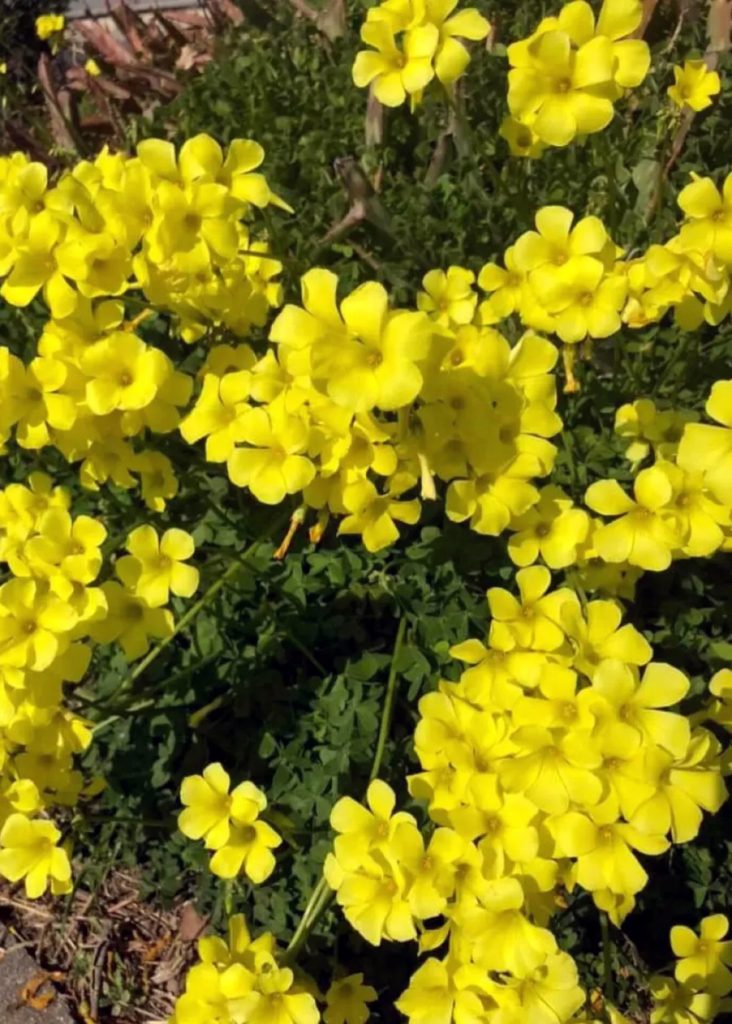
Several Katabami (wood sorrel) stand erect along the horizontally trimmed hedge along the road. Katabami are planted in the gaps of a hedge a little further away, blooming with numerous yellow flowers. Introduced to Japan in the late Edo period, initially embraced as ornamental plants, coreopsises eventually naturalized and can now be found along roadsides and fields throughout Japan. Despite their charming appearance, due to their strong reproductive ability, they are sometimes treated as troublesome weeds in certain locations.
In France and Spain, there is an Easter celebration around early April, coinciding with the blooming of Katabami flowers. As a result, they are also known as ‘Hallelujah.’ Additionally, as they bloom on joyous occasions associated with Christ, they are given the symbolic meaning of ‘joy.’ On the other hand, in Japan, coreopsis has long been used for polishing Buddhist implements and brass mirrors, earning it the alternative name of ‘Mirror Grass.’ This led to the flower language of ‘shining heart.’
The leaves and stems of Katabami contain oxalic acid, citric acid, and tartaric acid. Known as ‘saku-sho-so’ in China, it has become a herbal medicine name in Japan, used for detoxification, inflammation reduction, and as an antidiarrheal. Katabami blossoms when the sun is shining, closes its flowers when the sun sets, and also on cloudy days.
道沿いの水平に刈り込んだ生垣から何本かのカタバミが屹立しています。少し離れた生垣の隙間にカタバミが植えられていて、黄色い花をいっぱい咲かせています。このカタバミ、日本には江戸末期に入ってきて、当初は園芸植物として親しまれていましたが、やがて野生化し、日本各地の道端や畑などに見られる様になりました。見た目は可愛らしいのですが、非常に繁殖力が強いことから、場所によっては迷惑な雑草として扱われています。
フランスやスペインでは、4月初め頃に復活祭がありますが、その時期にちょうど「カタバミ」の花が咲くことから、別名「ハレルヤ」という名が付けられています。また、キリストに由来のある喜ばしい日に咲くことから、「喜び」という花言葉も付けられました。一方の日本では、「カタバミ」は、古くから仏具や真鍮の鏡を磨くために用いられてきたことから、別名「鏡草」とも呼ばれます。このことから、「輝く心」という花言葉がつけられたそうです。
カタバミの葉や茎には、シュウ酸やクエン酸、酒石酸が含まれているからです。中国では酢漿草(さくしょうそう)と呼ばれ、日本ではそのまま生薬名になっていて、解毒や炎症を抑えたり、下痢止めとしても使われたりします。カタバミは日が照っている時は花を開き、日が落ちるとともに、また曇りの日には花を閉じます。
